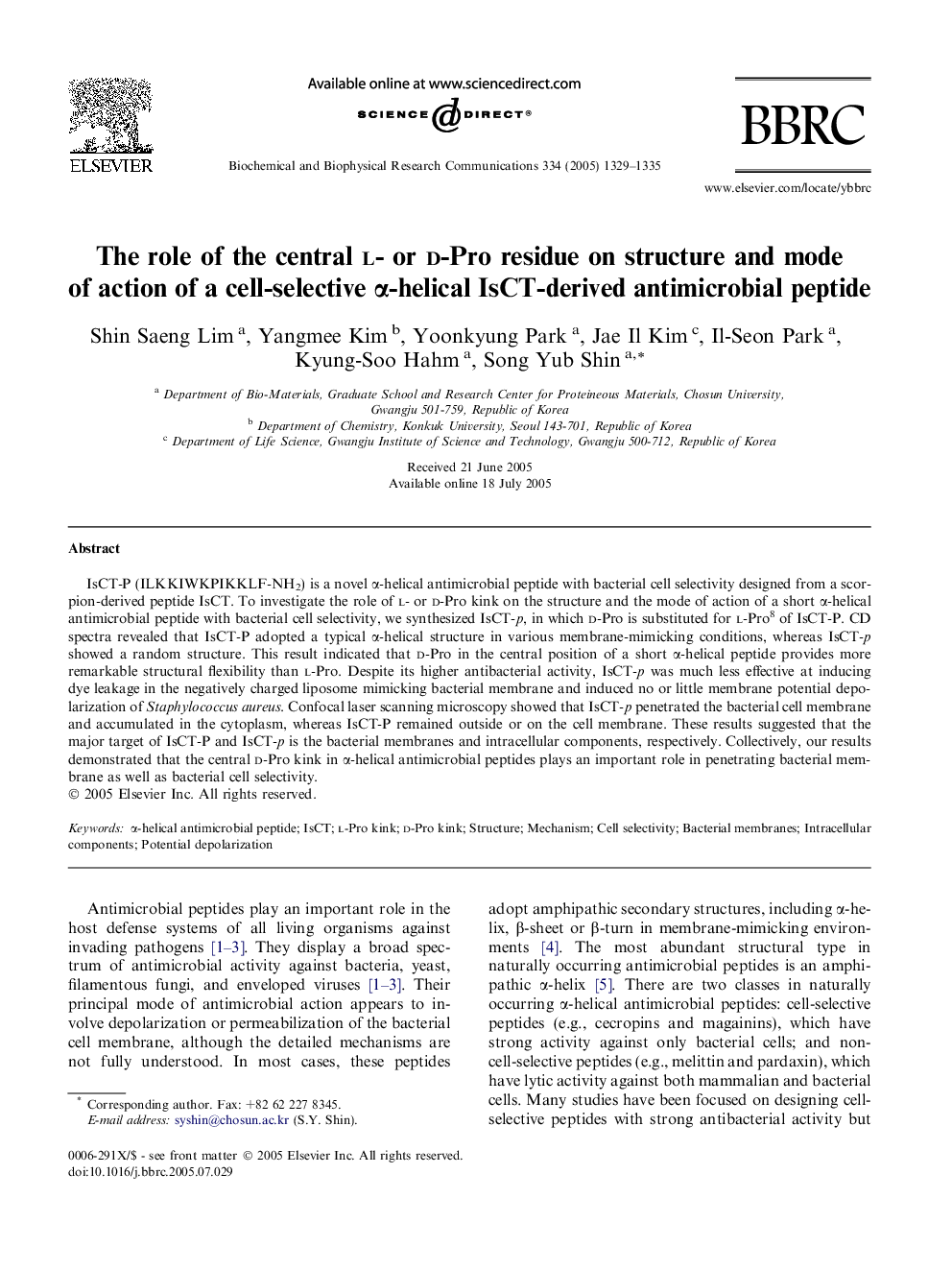| کد مقاله | کد نشریه | سال انتشار | مقاله انگلیسی | نسخه تمام متن |
|---|---|---|---|---|
| 10769070 | 1050818 | 2005 | 7 صفحه PDF | دانلود رایگان |
عنوان انگلیسی مقاله ISI
The role of the central l- or d-Pro residue on structure and mode of action of a cell-selective α-helical IsCT-derived antimicrobial peptide
دانلود مقاله + سفارش ترجمه
دانلود مقاله ISI انگلیسی
رایگان برای ایرانیان
کلمات کلیدی
موضوعات مرتبط
علوم زیستی و بیوفناوری
بیوشیمی، ژنتیک و زیست شناسی مولکولی
زیست شیمی
پیش نمایش صفحه اول مقاله

چکیده انگلیسی
IsCT-P (ILKKIWKPIKKLF-NH2) is a novel α-helical antimicrobial peptide with bacterial cell selectivity designed from a scorpion-derived peptide IsCT. To investigate the role of l- or d-Pro kink on the structure and the mode of action of a short α-helical antimicrobial peptide with bacterial cell selectivity, we synthesized IsCT-p, in which d-Pro is substituted for l-Pro8 of IsCT-P. CD spectra revealed that IsCT-P adopted a typical α-helical structure in various membrane-mimicking conditions, whereas IsCT-p showed a random structure. This result indicated that d-Pro in the central position of a short α-helical peptide provides more remarkable structural flexibility than l-Pro. Despite its higher antibacterial activity, IsCT-p was much less effective at inducing dye leakage in the negatively charged liposome mimicking bacterial membrane and induced no or little membrane potential depolarization of Staphylococcus aureus. Confocal laser scanning microscopy showed that IsCT-p penetrated the bacterial cell membrane and accumulated in the cytoplasm, whereas IsCT-P remained outside or on the cell membrane. These results suggested that the major target of IsCT-P and IsCT-p is the bacterial membranes and intracellular components, respectively. Collectively, our results demonstrated that the central d-Pro kink in α-helical antimicrobial peptides plays an important role in penetrating bacterial membrane as well as bacterial cell selectivity.
ناشر
Database: Elsevier - ScienceDirect (ساینس دایرکت)
Journal: Biochemical and Biophysical Research Communications - Volume 334, Issue 4, 9 September 2005, Pages 1329-1335
Journal: Biochemical and Biophysical Research Communications - Volume 334, Issue 4, 9 September 2005, Pages 1329-1335
نویسندگان
Shin Saeng Lim, Yangmee Kim, Yoonkyung Park, Jae Il Kim, Il-Seon Park, Kyung-Soo Hahm, Song Yub Shin,